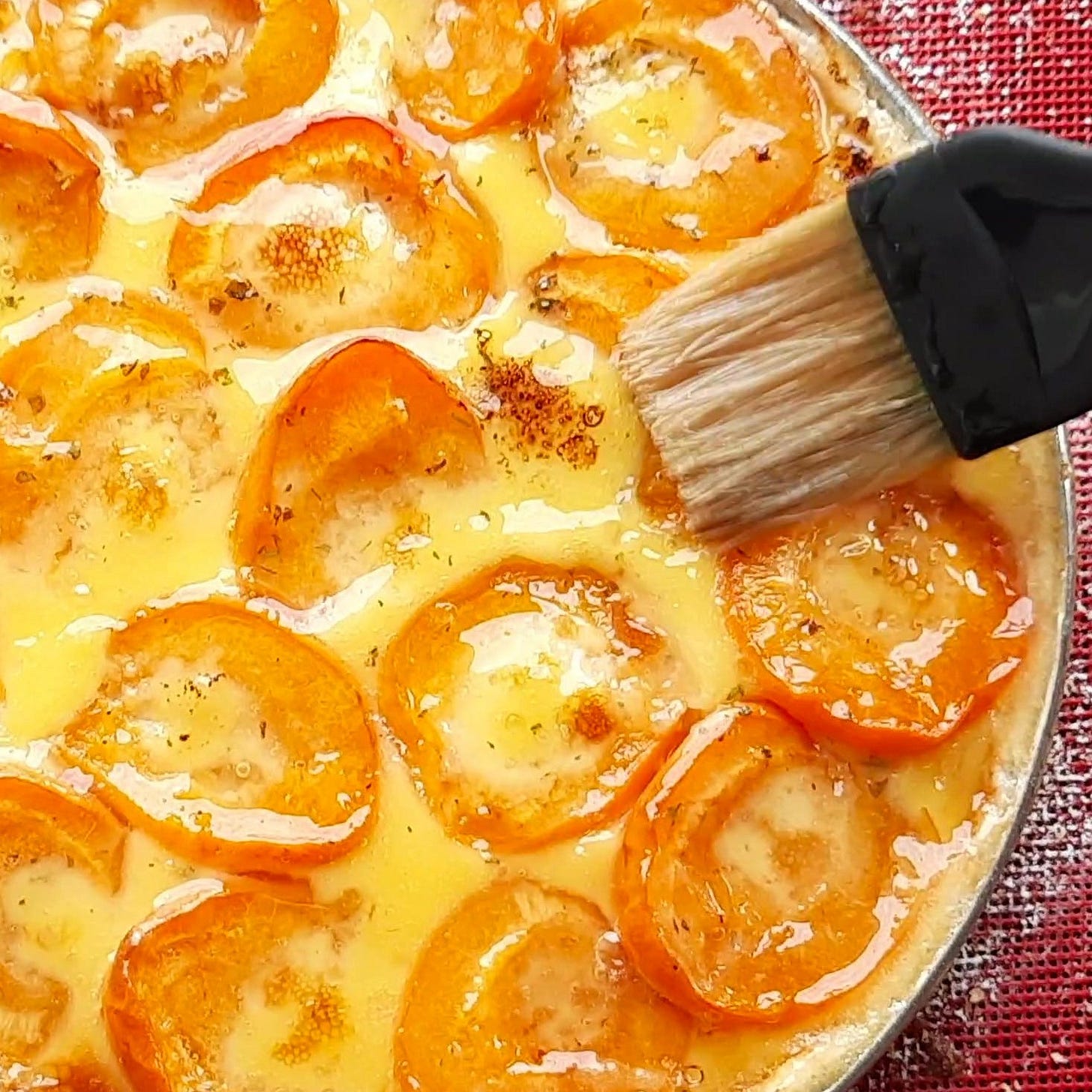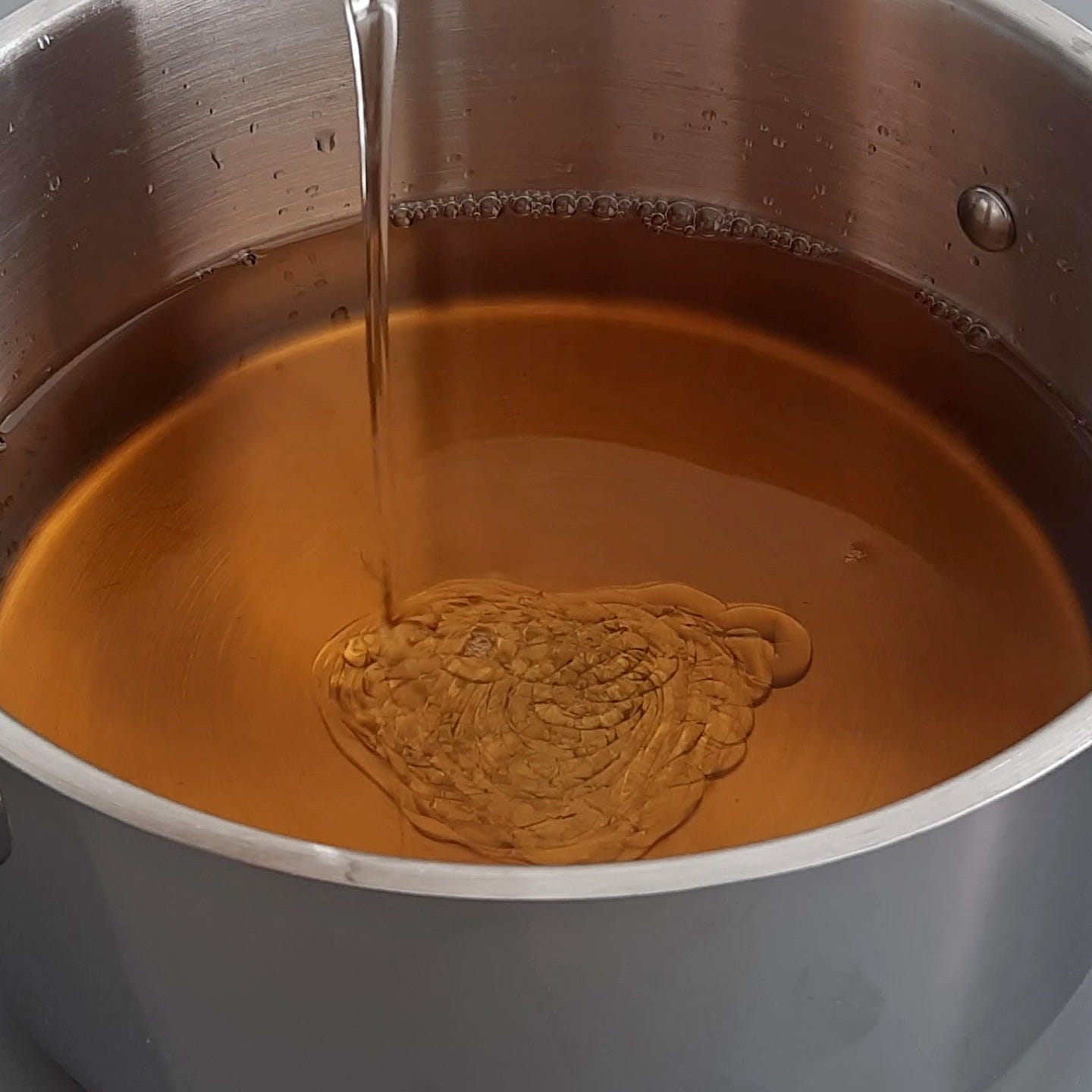5-Minute Clear Fruit Glaze – No Gelatin, No Jam
Fruit glaze is a simple way to make any dessert or dish pop. Whether brushed on a warm tart or coated over grilled veggies, it adds extra flavor and a nice, glossy finish.
Applying a thin layer of the glossy, sweet, tangy fruit glaze significantly enhances the taste and appearance of tarts, Danish pastries, cakes, or savory dishes.
While traditional tart glazes often contain jam and gelatin, there's an even quicker way to make a luscious fruit glaze without these ingredients.
Jam, while flavorful, can be overly sweet and may not be suitable for certain dishes. We don't need more sugar added to it. Gelatin, on the other hand, is not ideal for those following a vegetarian or vegan diet.
Here comes Pectin—a natural thickener derived from fruits. It plays a crucial role in making fruit preserves and jams.
The two types of Pectin primarily used in cooking and baking are NH (low-methoxyl pectin) and regular fruit pectin (high-methoxyl pectin). Both are good, but NH pectin is better.
What's the difference? NH pectin is thermo-reversible, meaning it can be melted and chilled multiple times. Because of its smooth, glossy, and stable finish, it's commonly used in pastry applications like fruit glazes and mousses.
Substitutions
Pear juice is the best alternative to apple juice. Orange and clear pineapple juice could work, but dark-colored juices like grape or mango are certainly not possible. Water is also an option.
Regular fruit pectin can substitute NH pectin, but the texture and gloss aren't as good.
Clear Fruit Glaze
1 liter apple juice
650 g granulated sugar
22 g NH pectin
65 g glucose
65 g lemon juice
Method
In a bowl, mix the sugar and NH pectin very well. Set aside.
In a pan, warm the remaining ingredients to around 50°C (122°F), then add the sugar-pectin mixture while constantly whisking to remove any lumps.

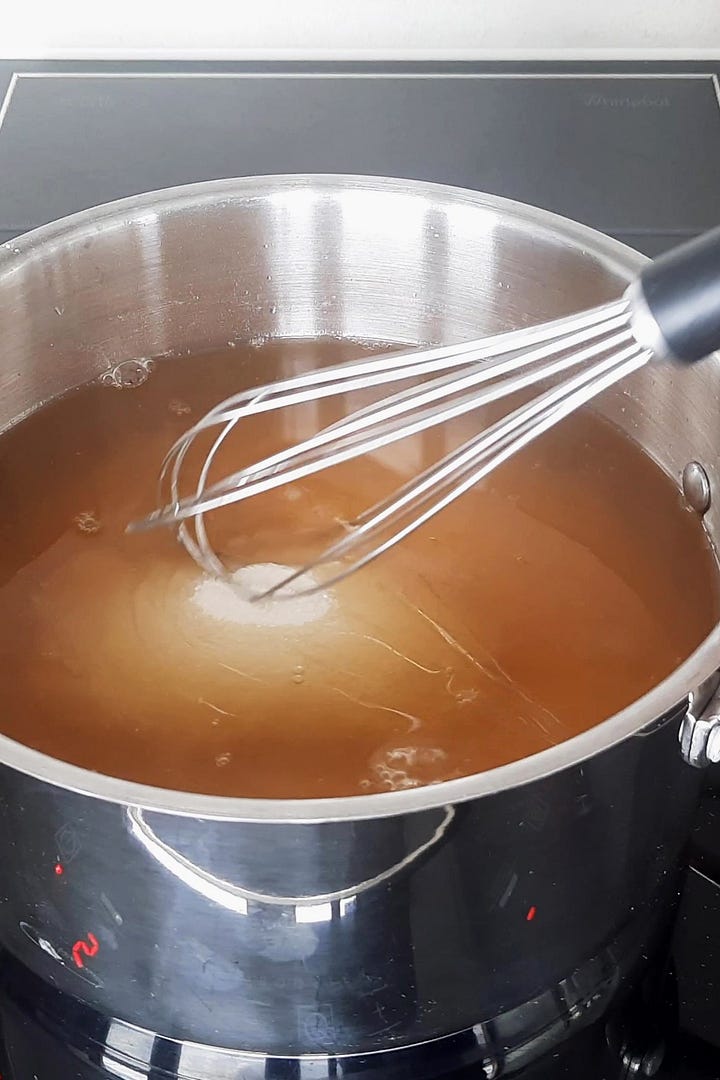
Cook over medium-high heat for a few minutes until it boils and bubbles. Continue boiling for about 2-3 minutes. Remove from heat and scoop the "foam or scum" using a spoon.
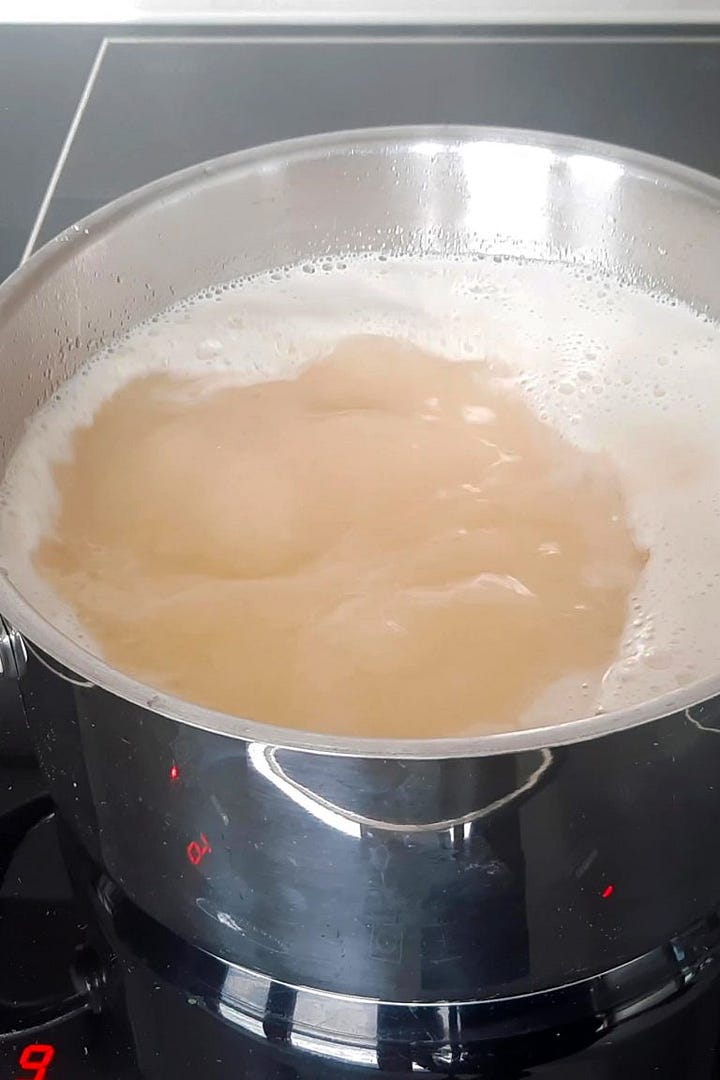
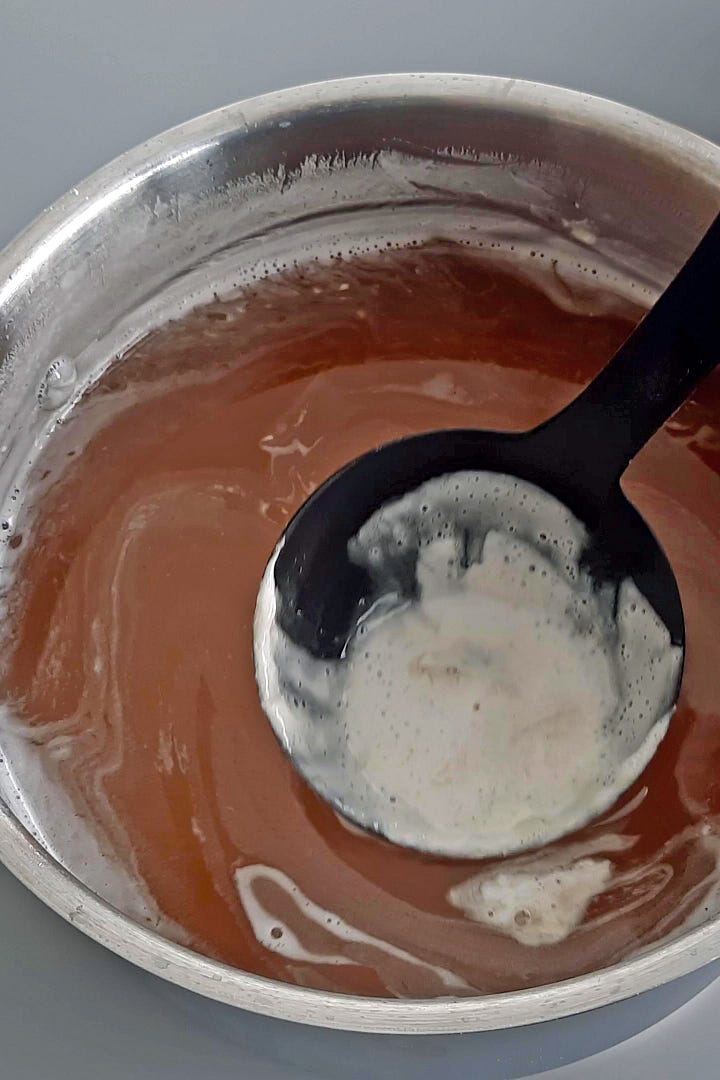
Transfer to a container, cover the surface with cling wrap, and cool down at room temperature before storing in the fridge. Reheat the glaze to about 35°C (95°F) before use.

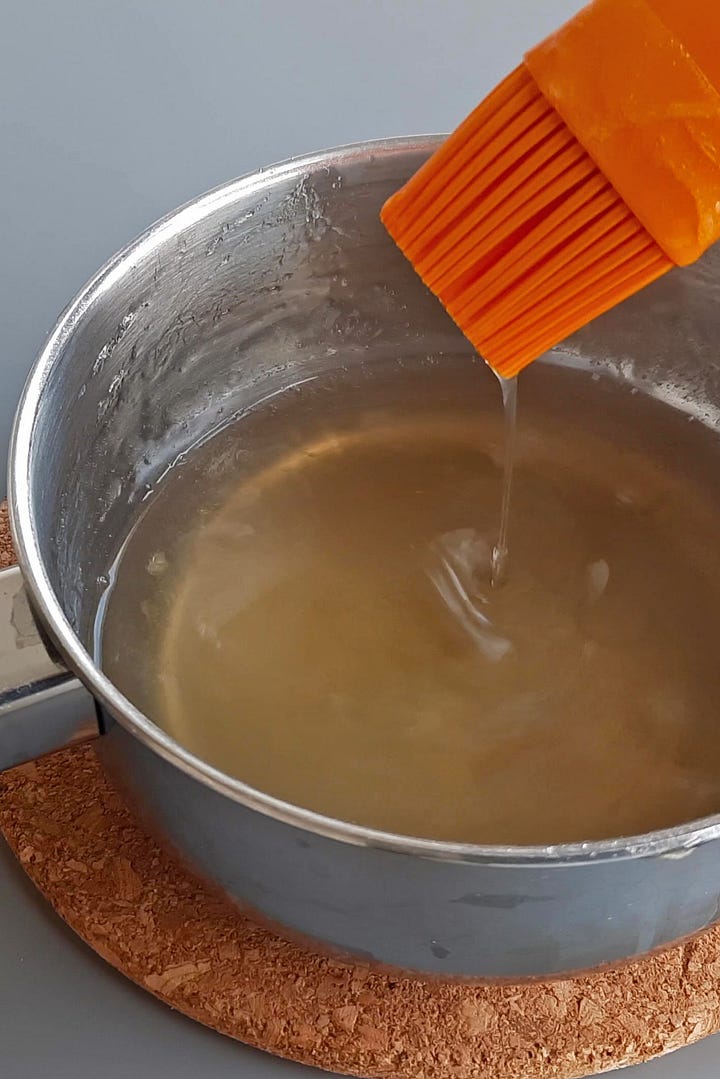
Notes: The glaze keeps 4-7 days in the fridge and can be frozen for many months.





